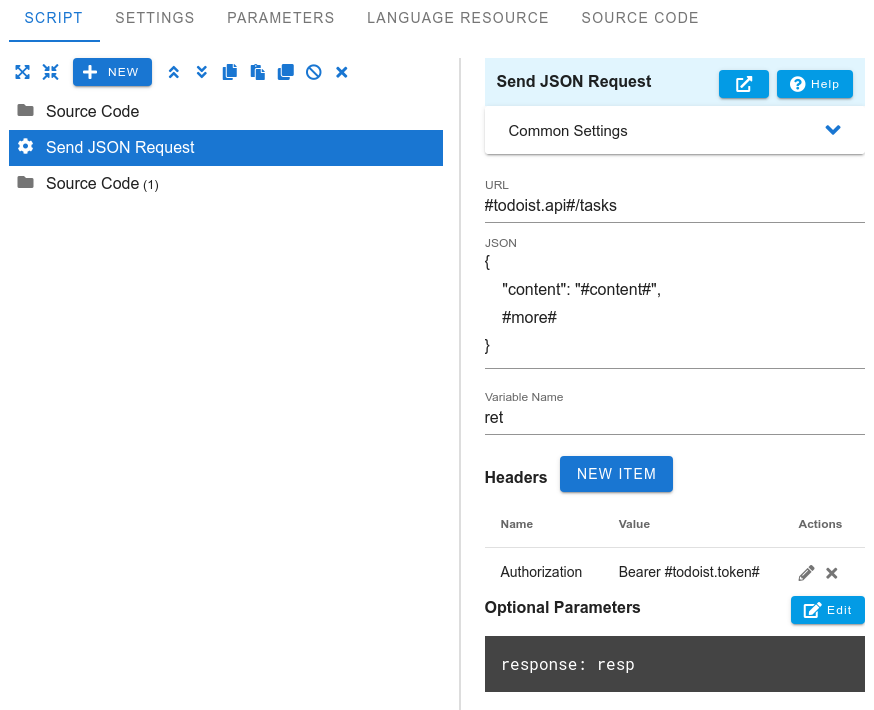Send JSON Request
Nowadays, JSON is often used in REST API messaging. The Send JSON Request command sends a JSON request to the specified URL and stores the received response in an object variable. You won't need to parse the JSON response additionally.

URL
Specify the URL where the JSON HTTP request will be sent.
JSON
Specify the JSON data to be sent. By default the request sends data by POST method, but if this field is empty the request will be sent by GET method.
Variable Name
Specify the name of a variable in which the server response will be written. An object variable will also be created into which the received JSON response will be parsed. For example, you've specified myresp in this field. Then when the server responses {"id": 10, "state": "success"} you can use the following values.
1#myresp# => {"id": 10, "state": "success"} 2#myresp.id# => 10 3#myresp.state# => success
Headers
You can define additional request headers if needed. For example, Authorization. You don't have to specify the Content-Type header. It will be added automatically with the value application/json; charset=UTF-8.
Optional Parameters
You can specify additional parameters.
response
The name of the object variable that will contain the response status. It will have two fields:
- statuscode - status code;
- status - response status.
For example, if you define response: resp, it will have the following values when the script is called successfully.
1#resp.statuscode# => 200 2#resp.status# => 200 OK
Note that if you do not define this parameter and the server returns a status code less than 200 or greater than 299, then in this case, the script will not parse the server response and returns an error. If this parameter is specified, you can handle the erroneous server response yourself.